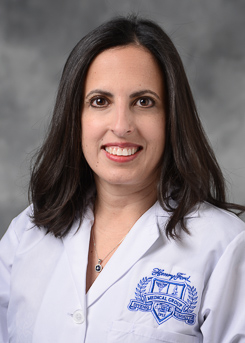
The healthcare industry must now create a true partnership that makes the patient a member of the care team, said Feeley, one of the keynote speakers Tuesday morning at the IHI’s 29th annual National Forum on Quality Improvement in Healthcare.
This next step in the evolution of patient care would allow patients to be part of the team when they choose to be or, in some cases, even lead the team.
Either way, he said, clinicians must value the patients’ contributions and involve them in the entire process of their care to create a true partnership.
.@DerekFeeleyIHI @RanaAwdish @SickGirlSpeaks deliver opening keynote at #IHIForum | Read more about the issues headlining this year’s event: https://t.co/TnjnQvZlWE pic.twitter.com/9eCPxzJx84
— IHI (@TheIHI) December 12, 2017
This concept, which Feeley also describes as "mutuality," will not only lead to greater patient engagement and better outcomes, but it may also increase physician satisfaction and reduce burnout.
This shared and common purpose would mean neither the patient nor the physician would stand aside, he said. It could help physicians rediscover their joy and passion in medicine because this new relationship, based on trust, would mean each would value the strength and contributions the other makes.
The importance of this physician-patient partnership was explained further by the other keynote speakers, Rana Awdish, M.D., and Tiffany Christensen. Both shared their personal experiences in which the care they received as patients was often fragmented and in some cases lacked compassion.
When a doctor becomes the patient

In 2008, Awdish, director of the pulmonary hypertension program at Henry Ford Hospital in Detroit, went from being a critical care physician to a critically ill patient in the span of two hours when a tumor she didn’t know she had in her liver ruptured and she nearly bled to death at her hospital.
Her liver failed from the blood loss, her kidneys shut down, her blood stopped clotting and she went into respiratory failure. She was seven months pregnant. Although Awdish survived, her baby did not.
Her traumatic experience, she said, opened her eyes to behaviors she had been blind to at the hospital.
“I saw things about us, physicians and healthcare providers, that I wouldn’t want to see. But once I saw I couldn’t unsee,” she said. Awdish described a healthcare system of uncoordinated care and an absence of compassion.
Physicians didn’t want to tell her bad news even if she, as the patient, needed and wanted to talk about it.
Physicians, she learned, often think that all questions patients ask must be answered with data. It’s harder for them to look at the emotions behind a patient’s questions and don't know how to respond.
But Awdish, who wrote about her illness in a memoir called "In Shock," said the experience has led her to become a more empathetic physician, someone who partners with her patients and guides them. This partnership, she said, forms bonds of trust and compassion, and empathy is reciprocal.
Finding joy and meaning in healthcare

Christensen, vice president for experience innovation at The Beryl Institute, has been a lifelong patient.
Born with cystic fibrosis, she spent much of her life in hospitals and only experienced sustained good health after her second double lung transplant. Her experience as a patient inspired Christensen to want to help other patients and families, and she became a professional patient advocate.
Although she thought she’d be great at the job because of her experience as a lifelong patient, Christensen said the opposite was true.
“I was amazed at how quickly I lost my connection to being a patient,” she told the nearly 5,500 attendees at the conference.
“Most detrimental, I stopped listening. I felt like I heard the complaints before, my list was too long or quite frankly, I didn’t like the way people were talking to me. I was shut down and my guard was up.”
Part of the problem, she said, was she struggled to find a sense of meaning in healthcare.
Christensen said she felt like she was a drop in the bucket in a big sea of healthcare. But she was able to gain her sense of purpose in healthcare when she reimagined the role of patients. When she was a patient, she wanted to be admired for her endurance and strength. Instead of pity, Christensen said, clinicians must admire patients for these qualities. Acknowledging those qualities in one another, she said, will help build a stronger partnership between patients and physicians.
Now she no longer believes that there is a drop in the bucket in healthcare. “Every single of us is a ripple effect and we have no idea how far the ripple will go and which shores they will land,” she said.